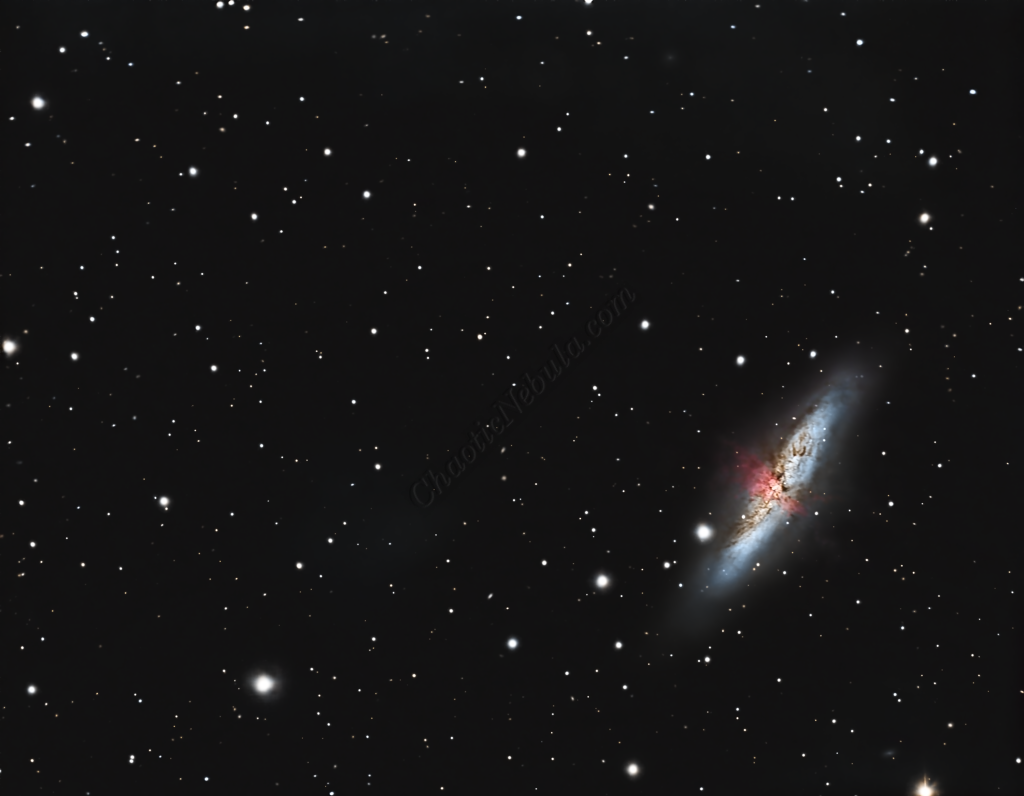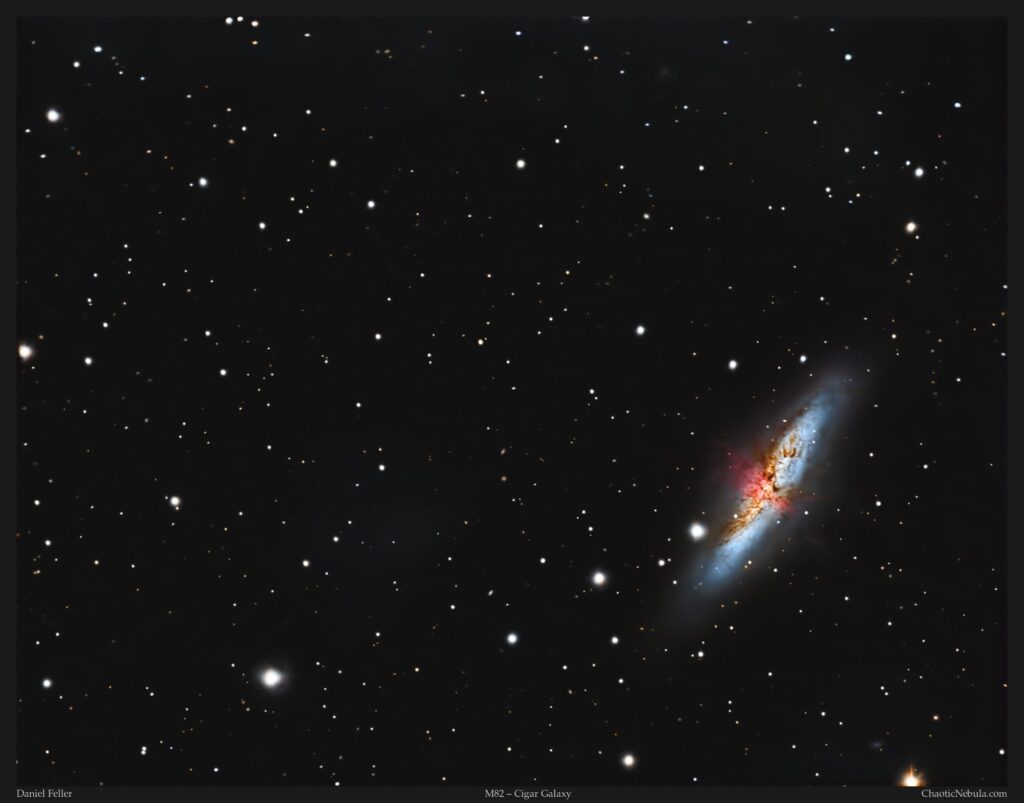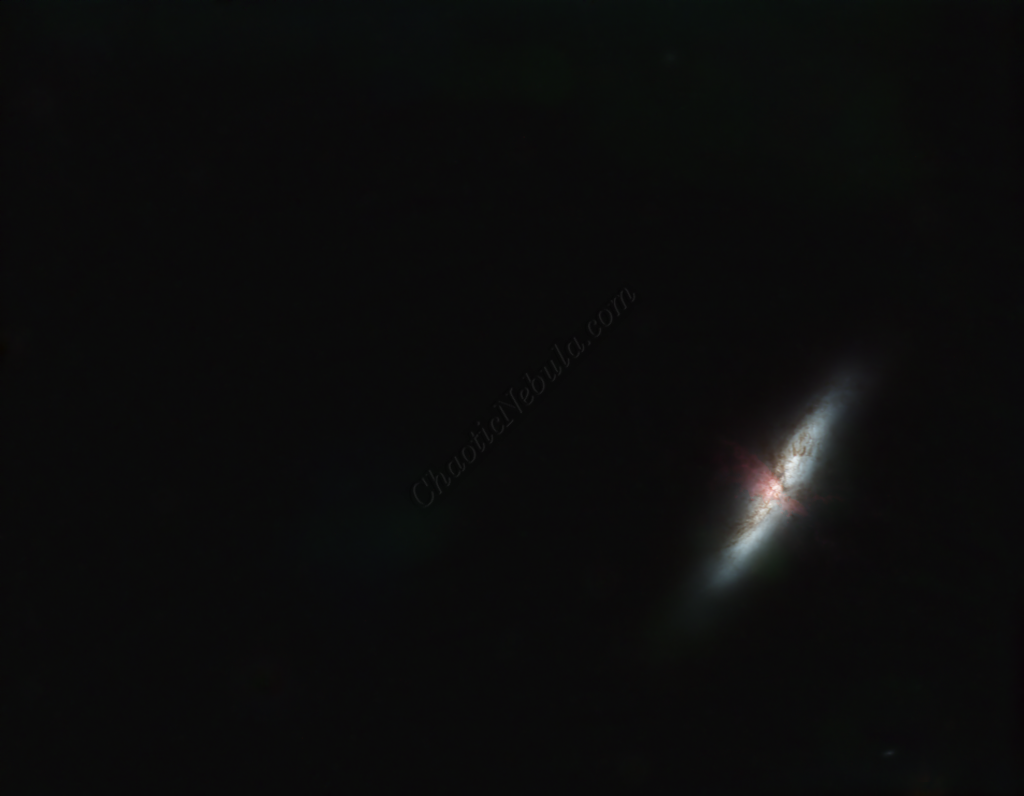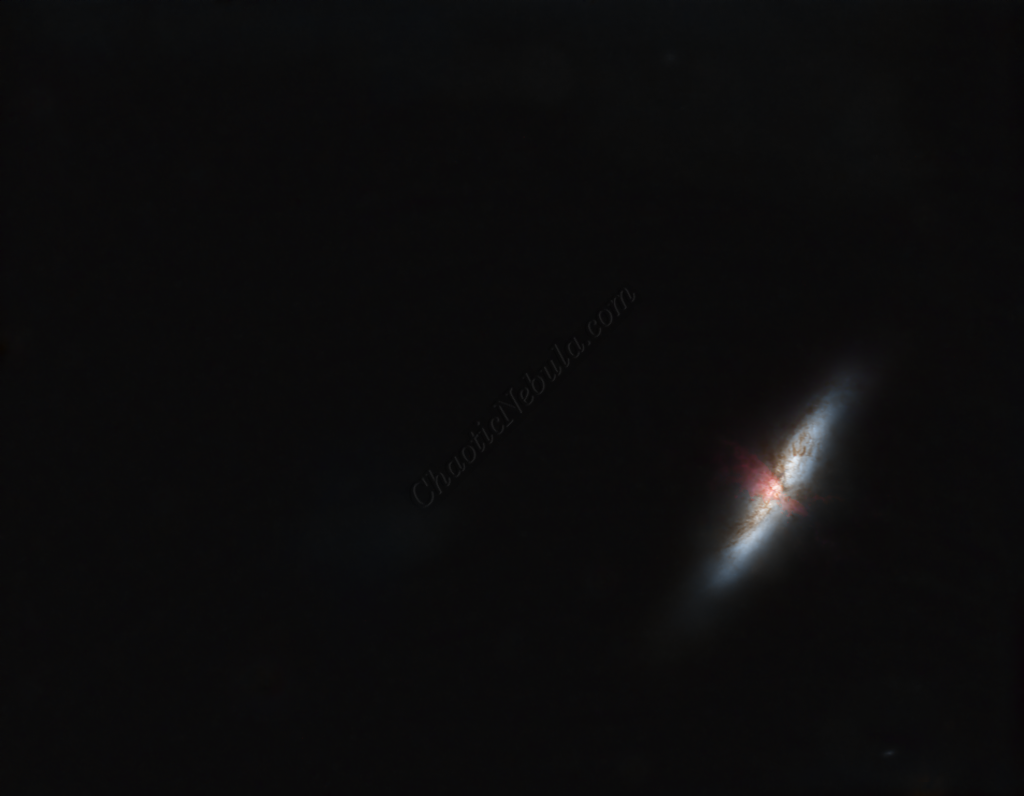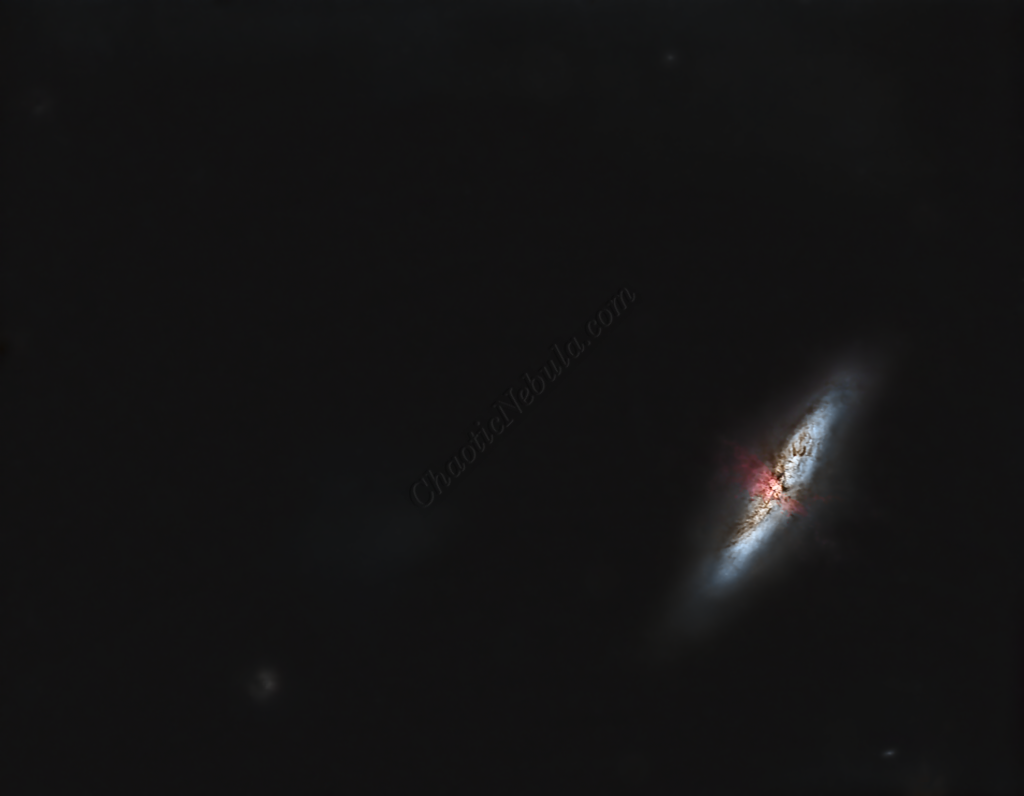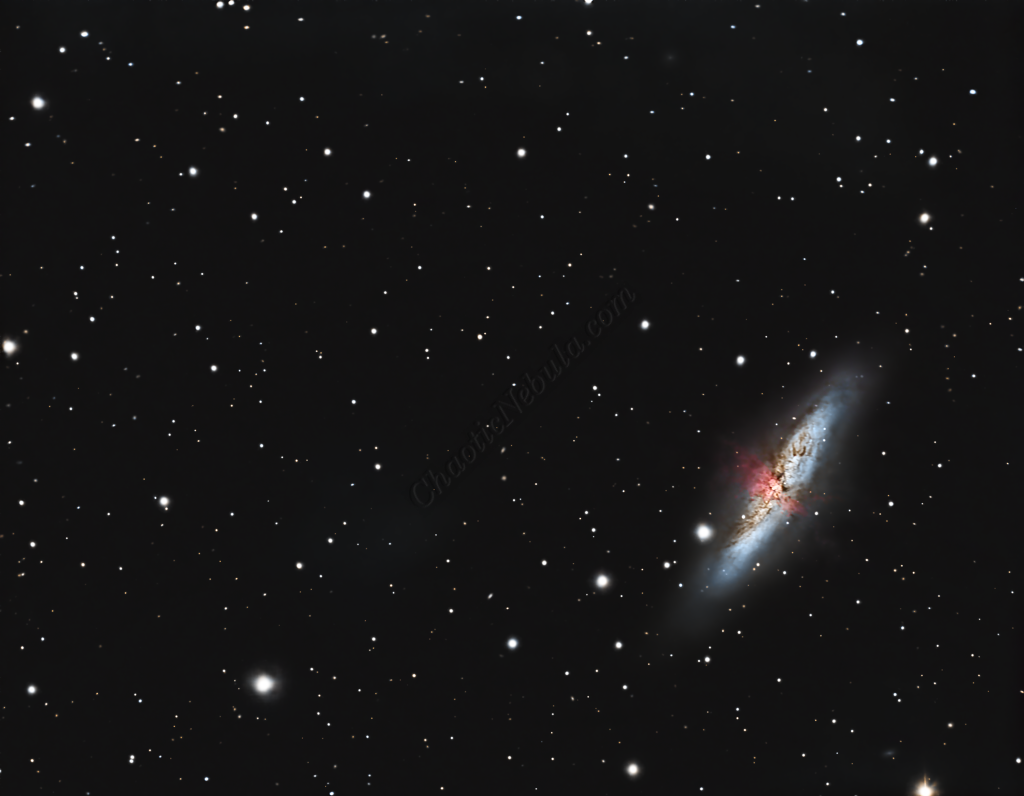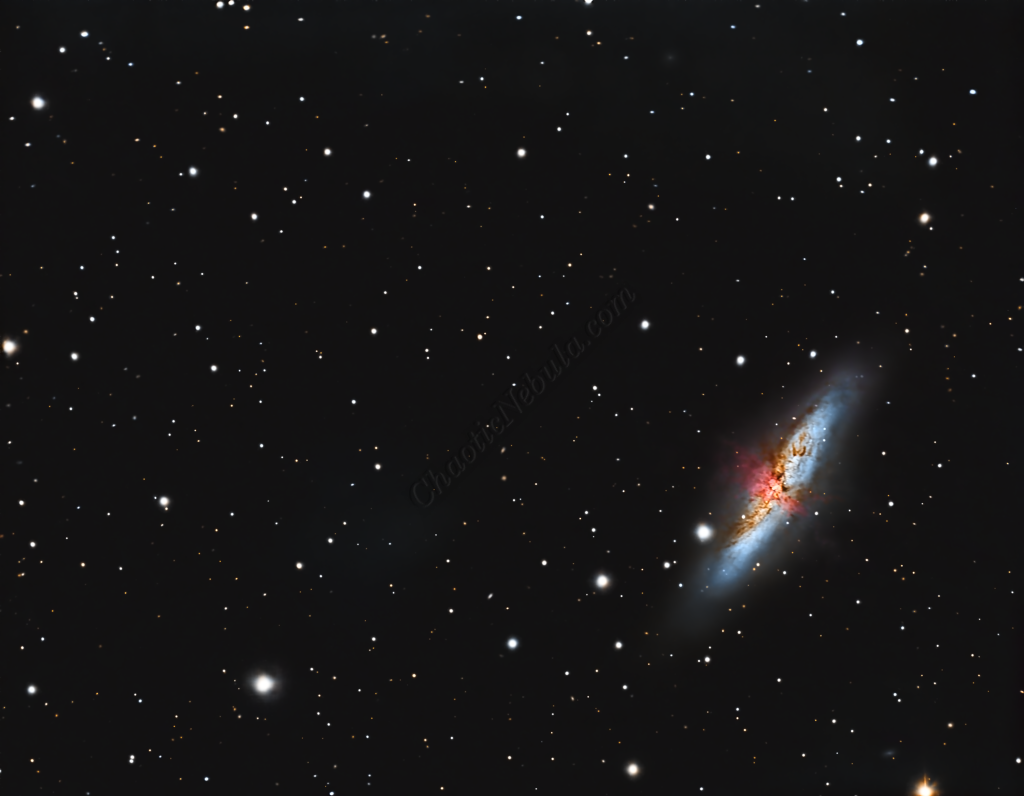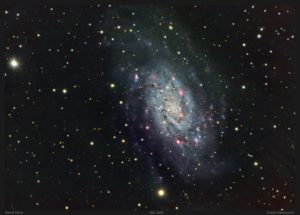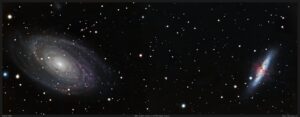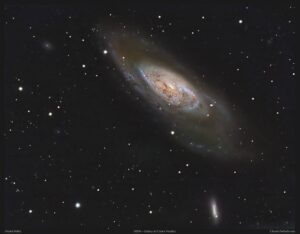M82, also known as the Cigar Galaxy, resides approximately 12 million light-years away in the constellation Ursa Major. This galaxy is known for its striking appearance, featuring an elongated shape and intense starburst activity that sets it apart from other galaxies.
The dust lanes intertwined within M82 play an important in its evolution. These dense accumulations of dust and gas serve as fertile grounds where gravitational interactions spur the formation of new stars. The compression of these materials fuels the ignition of fresh stellar bodies through nuclear fusion, often emitting a distinct reddish hue when observed through specialized filters like those tuned to hydrogen-alpha wavelengths.
For astronomers and astrophotographers alike, M82 presents an exciting target. Its notable brightness and distinctive structure make it accessible to telescopes of varying sizes and capabilities. By employing advanced imaging techniques and utilizing specialized filters, enthusiasts can capture detailed portraits of M82’s elongated form, intricate dust patterns, and clusters of newly formed stars with impressive clarity.
Imaging Details
- Workflow: Broadband workflow for Galaxies
- Red: 60*600 seconds
- Green: 60*600 seconds
- Blue: 60*600 seconds
- HA: 30*600 seconds
- Total Imaging Time: 35 hours
- Imaging Dates (7 nights)
- 2/10/2023
- 2/16/2023
- 2/25/2023
- 3/18/2023
- 3/23/2023
- 3/26/2023
- 4/11/2023
Imaging Notes
I’ve tried to image this galaxy multiple times over the course of a decade, each with varying results.
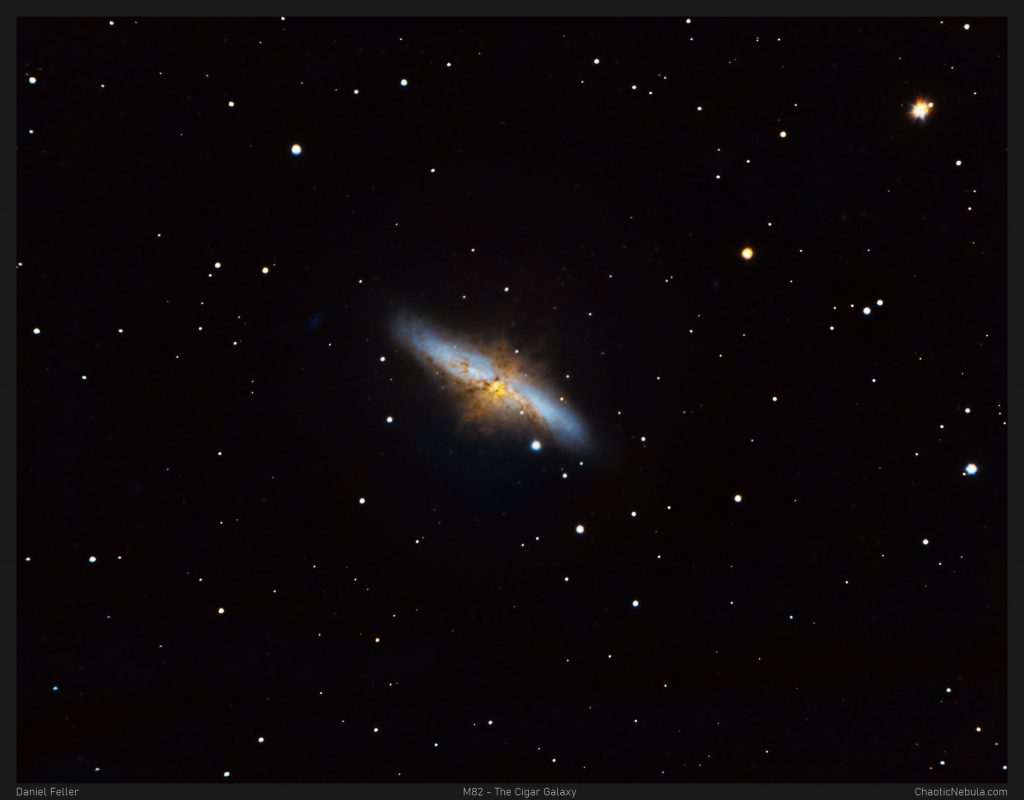
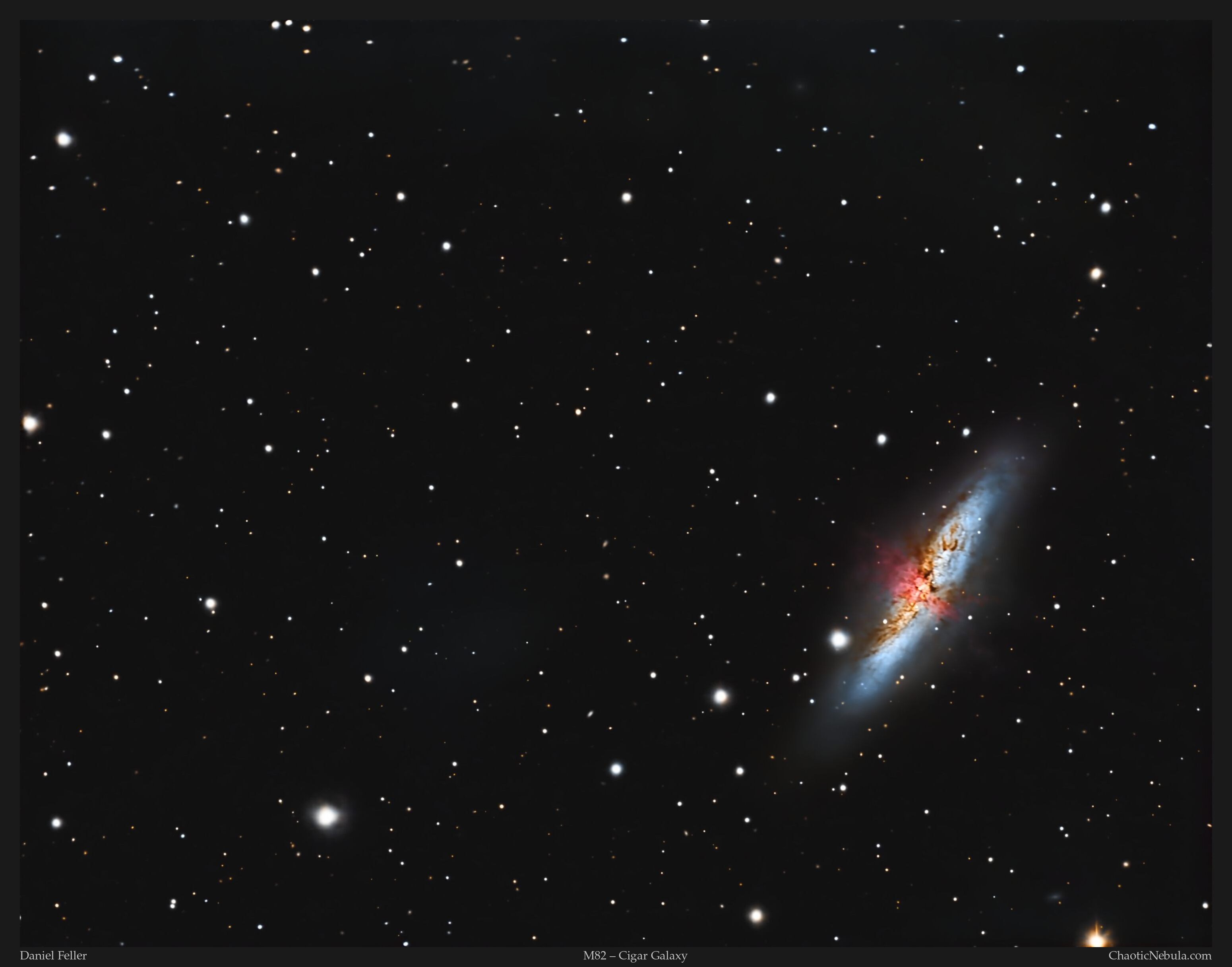
2020: I was using a focal reducer that was meant for visual and not photographic usage. This caused severe vignetting around the edges. Plus, the flat frames were created with a custom made light source that did not effectively remove dust motes and other anomalies.
2024: Over the years, I’ve learned a lot about the numerous processes in PixInsight. I’ve continued updating my workflows to create better images. The image created in 2024, uses the latest Broadband workflow for Galaxies workflow that leverages BlurXTerminator and NoiseXTerminator as part of this process.
Imaging Workflow
This image followed the Broadband workflow for Galaxies
I ran through the normal process of doing star removal early on. However, because this galaxy is so large and bright, the star removal technique removed detail within the arms of the galaxy. Although these would have been added back in at the end of the image processing workflow, the overall sharpness of the galaxy was poor. By keeping the stars integrated for the entire workflow, allowed for a better end result. With the stars present during the workflow, a more complex image stretching technique was required to prevent the stars from bloating. This is explained in the Luminance workflow section below.
Integrated Image
I started off with three images for red, green, and blue filters. I did my normal integration process using the PixInsight Weighted Batch Preprocessing Script.
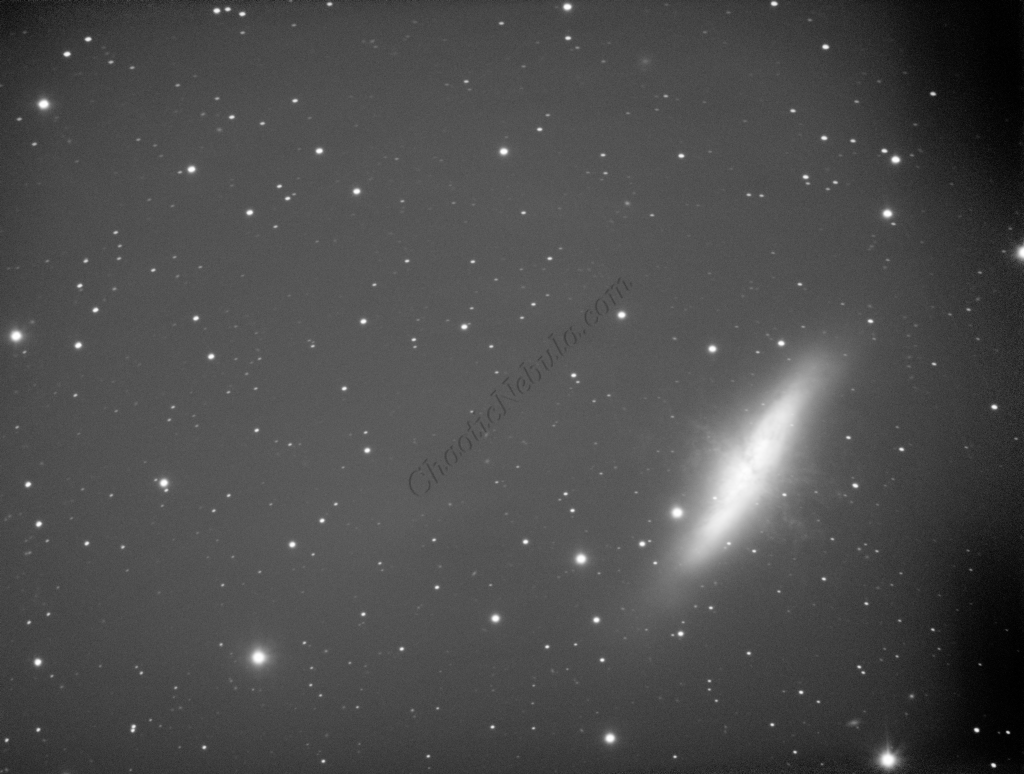
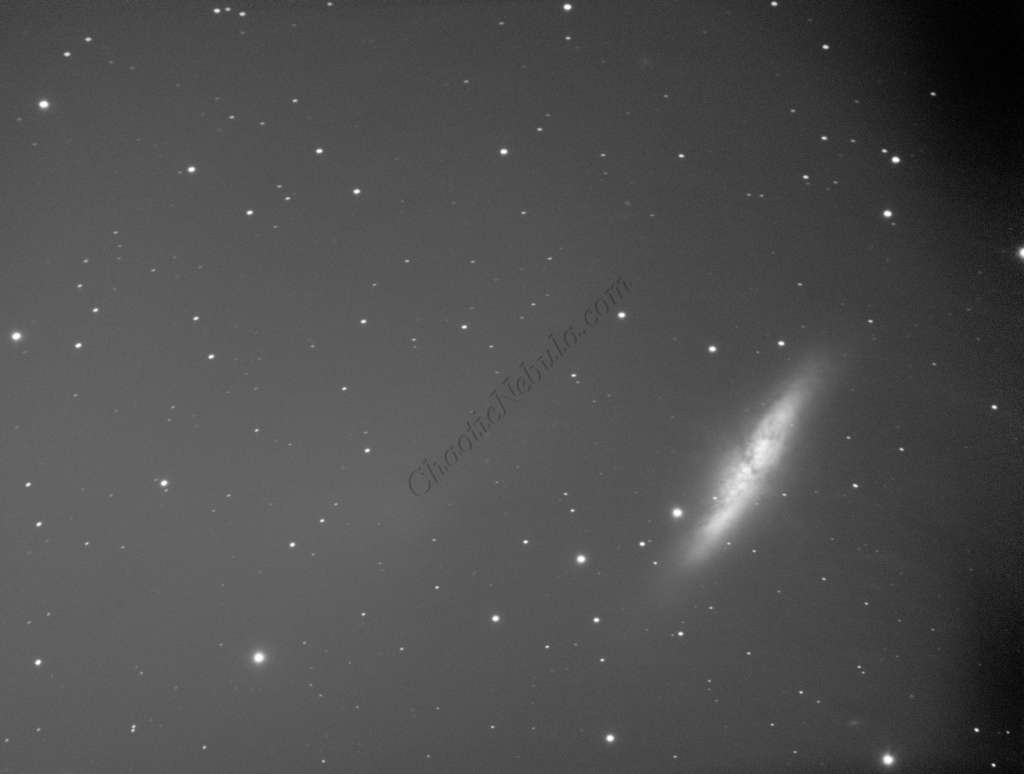
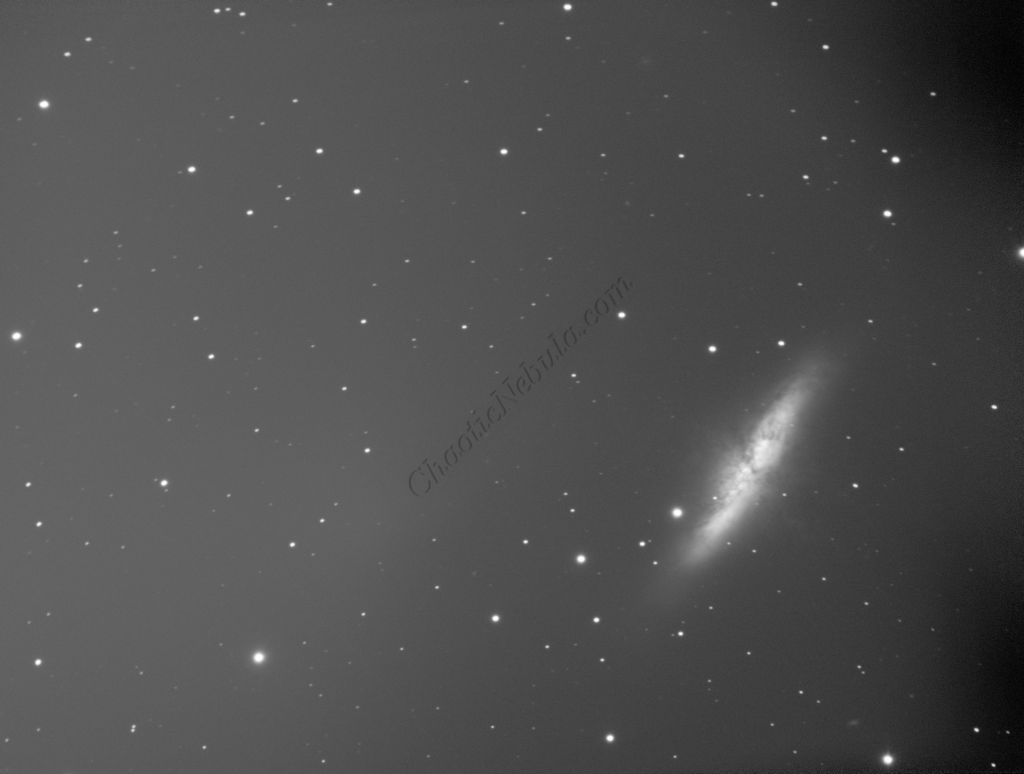
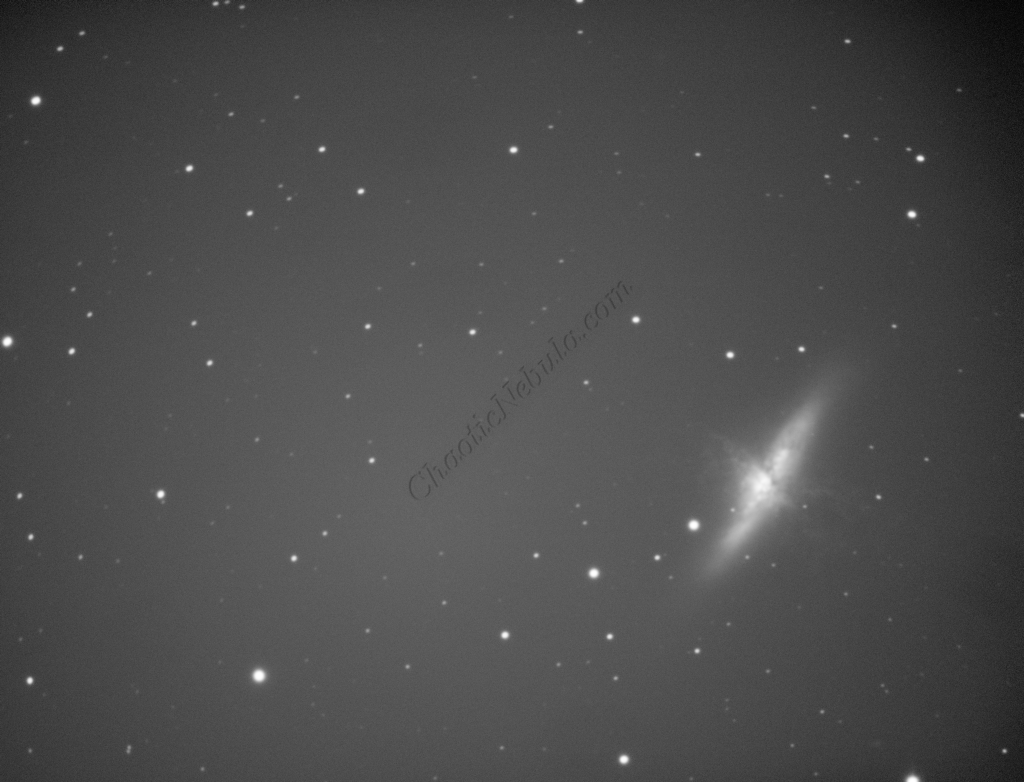
Gradient Correction
The Gradient Correction process made it easy to remove the extreme darkness/brightness around the edges.
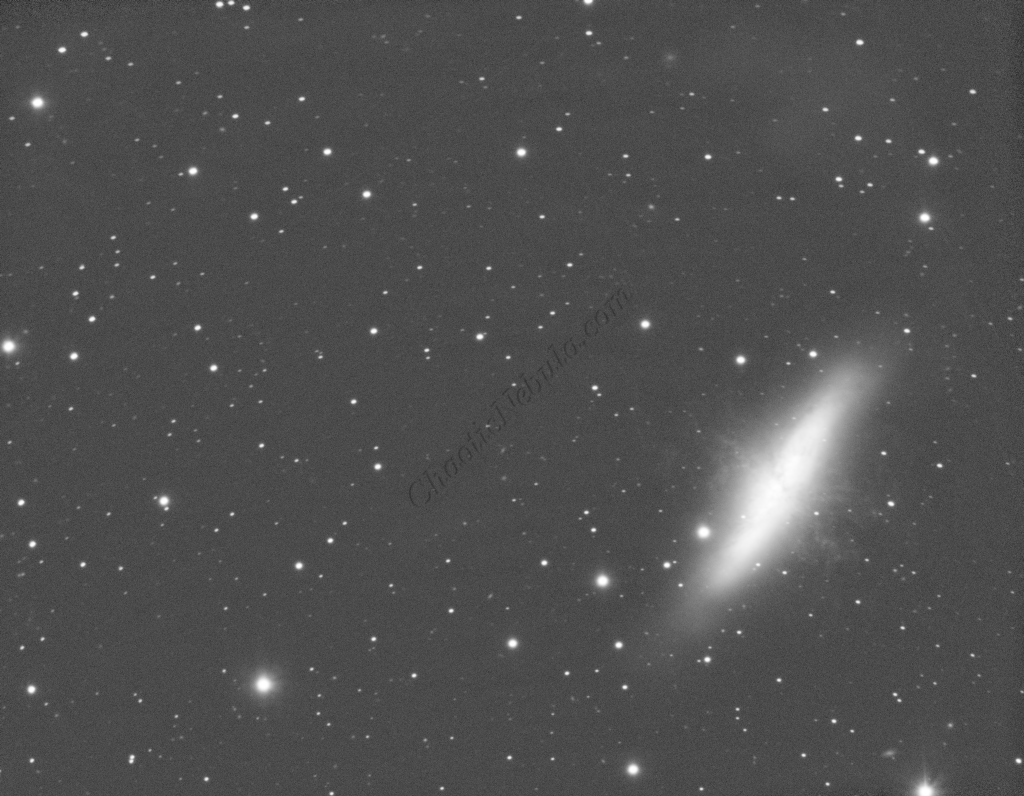
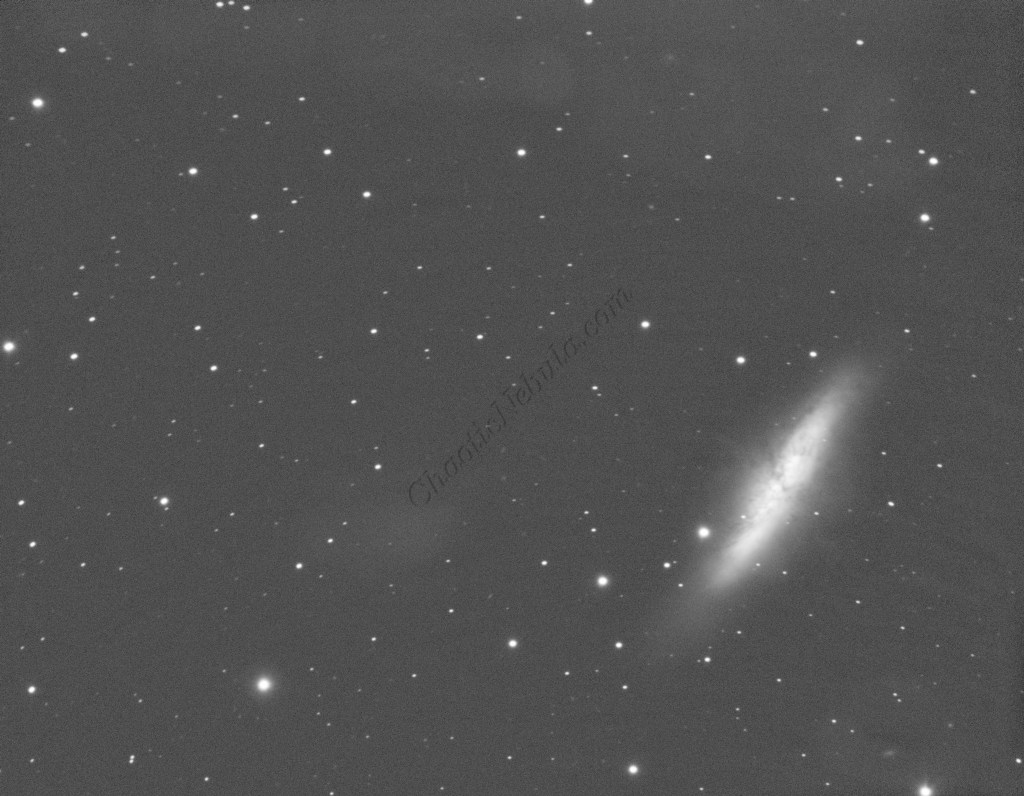
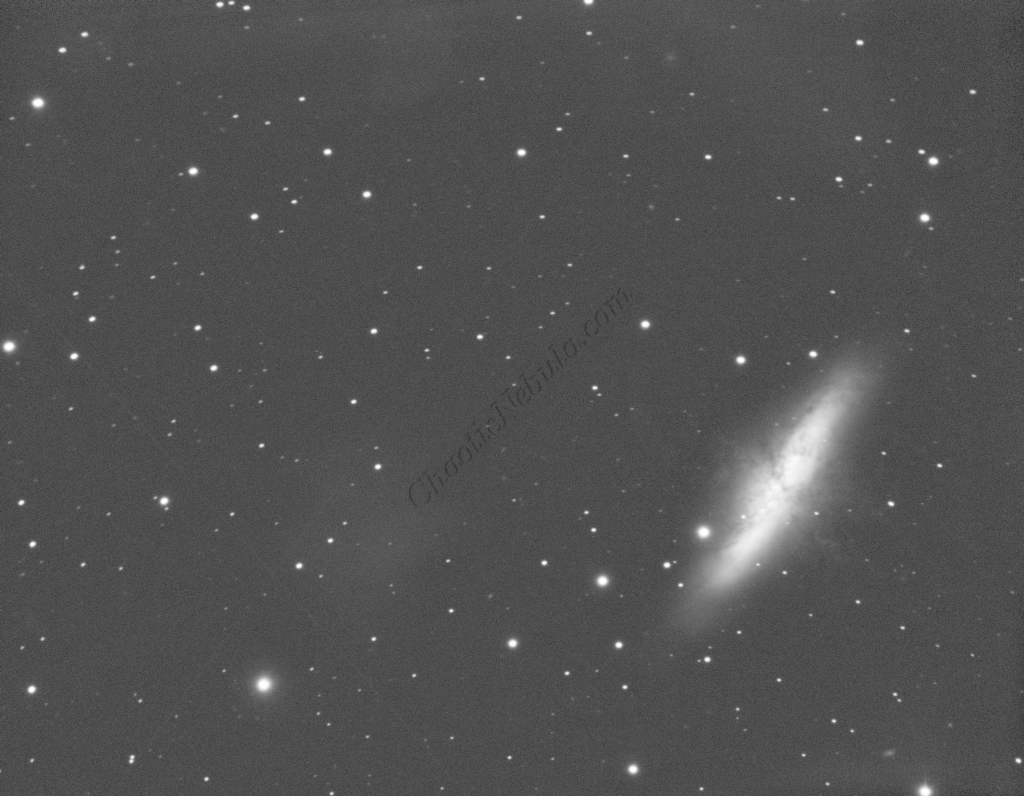
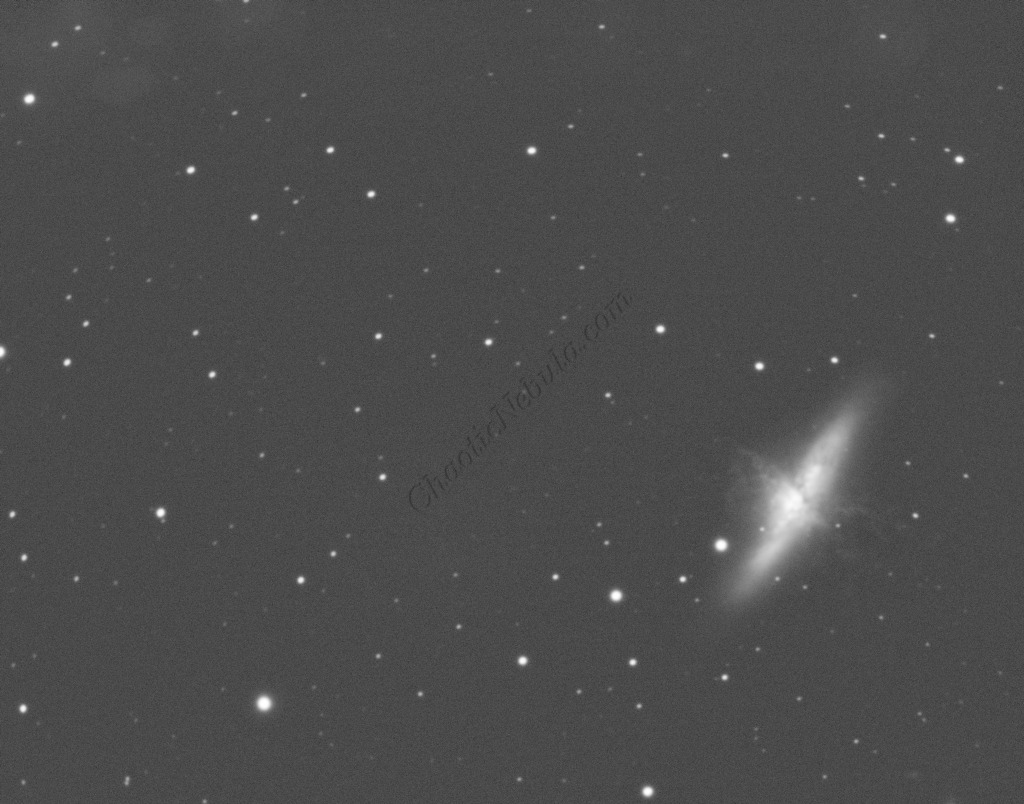
Deconvolution
BlurXTerminator is applied two times. The first time is for Correction only. This takes care of the coma (blurring of stars along the edges).
The second application of BlurXTerminator handles deconvolution, which improves the sharpness and details of the nebula while removing the blur from the image.



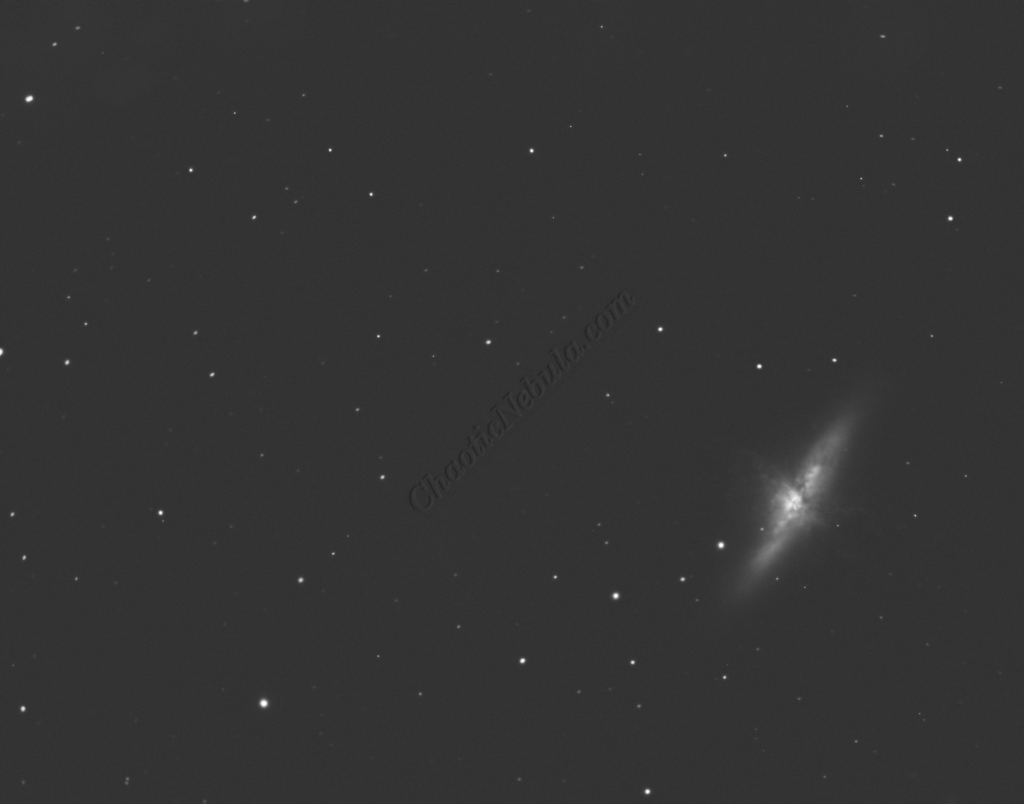
Noise Reduction
With the blurring corrected, it is time to do noise reduction. This time I used the new NoiseXTerminator add on.

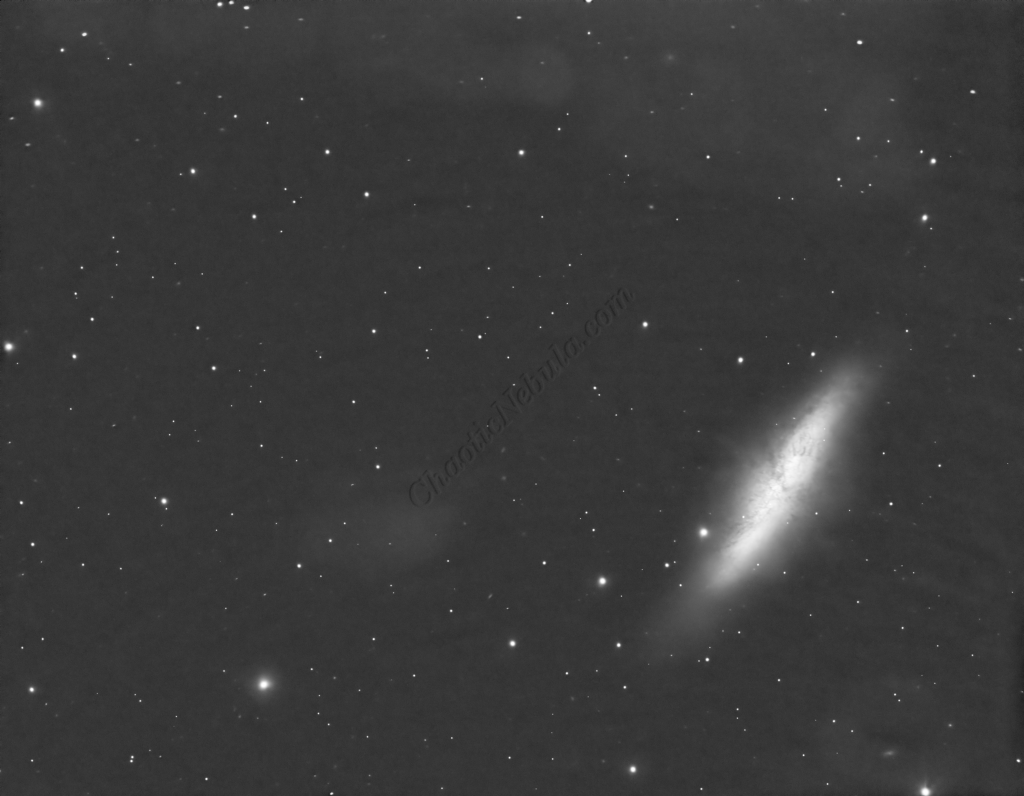

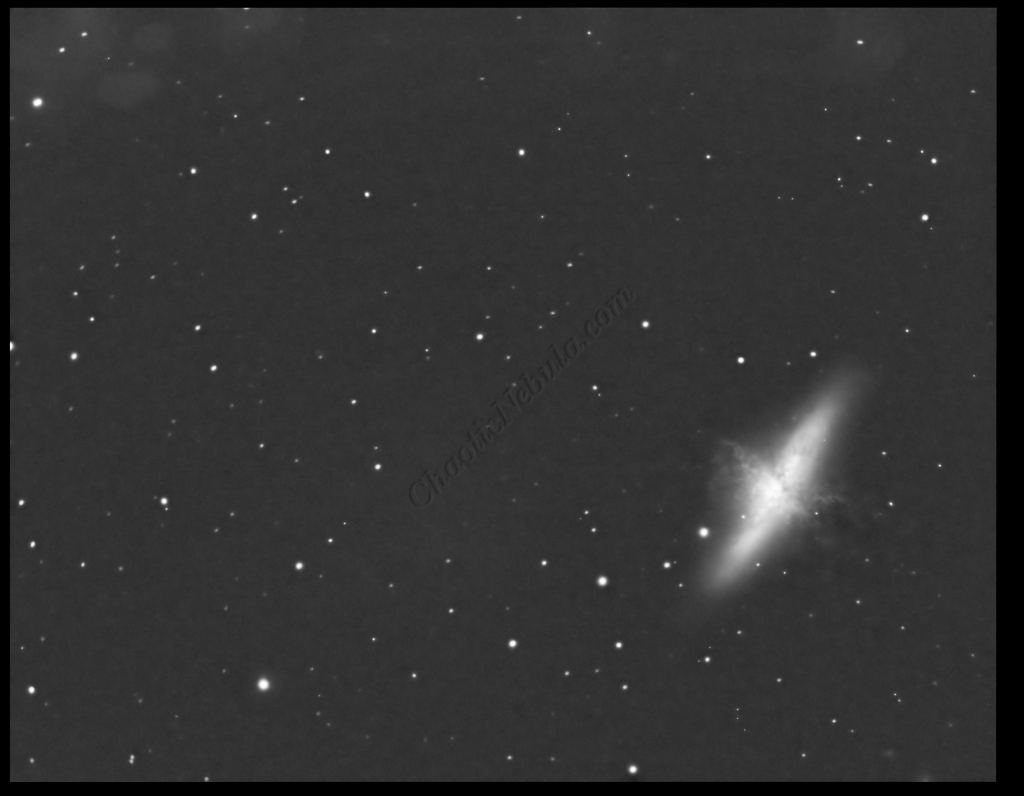
Channel Combination for RGB
The next step is to do a Linear Fit across the Red, Green, and Blue channels.
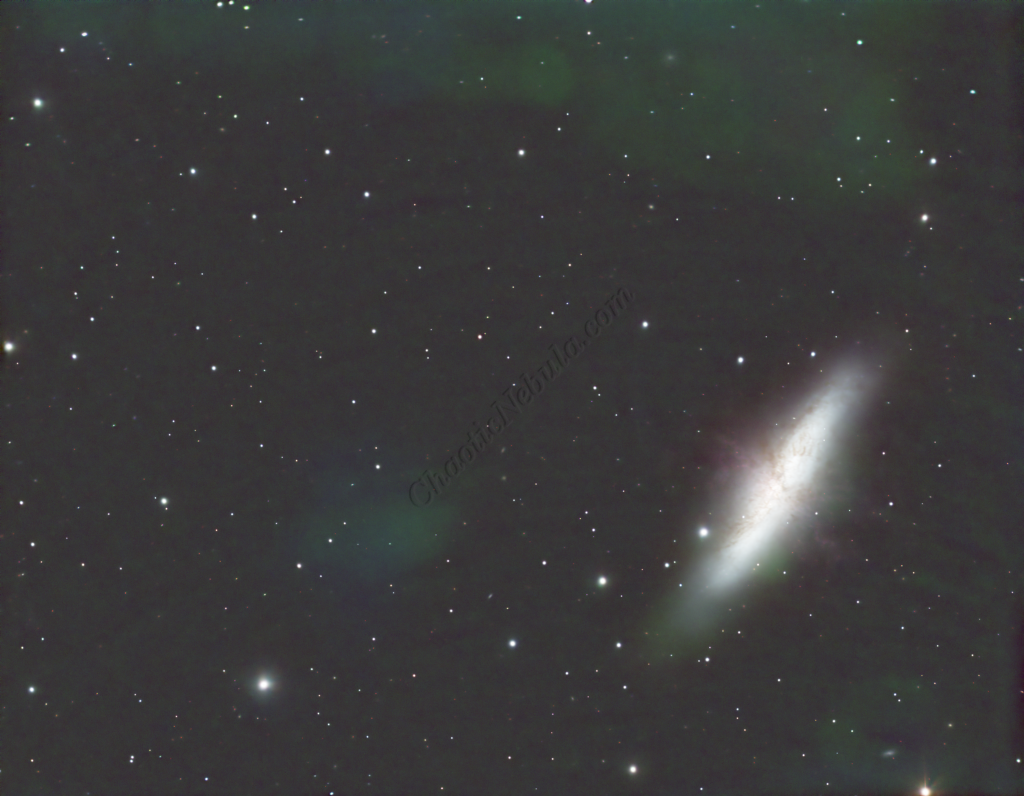
Spectro-Photometric Color Calibration
The Gaia dataset was used to apply color calibration by using the Spectro-Photometric Color Calibration process.

Star Removal
To ensure the hydrogen-alpha image does not influence the star color, StarNet+ was applied to remove the stars.
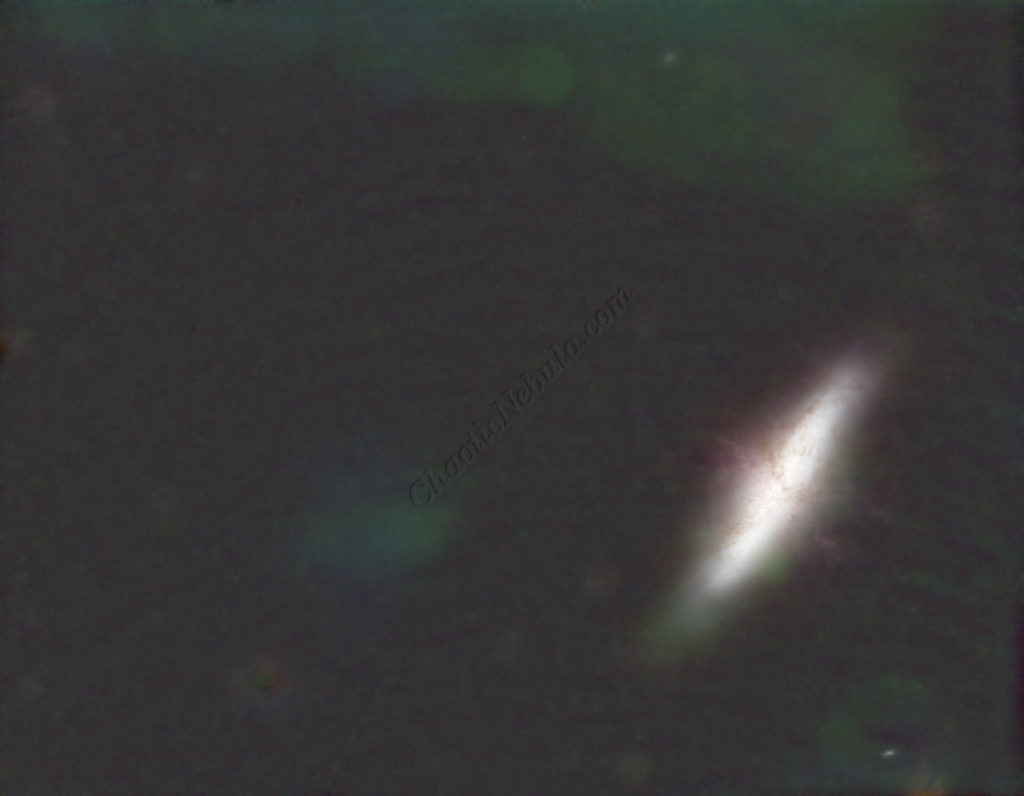
Channel Combination for RGB+HA
The next step is to separate the color image back into RGB and apply Linear Fit to the HA channel.
The hydrogen-alpha image was integrated into the RGB image in order to enhance the red channel. This use the Narrowband Integration (LRGB+HA) process of Pixel Replacement Multiplier with a strength of 0.35.
In addition, once the color image was created, the luminance channel was extracted to be used for the luminance workflow.
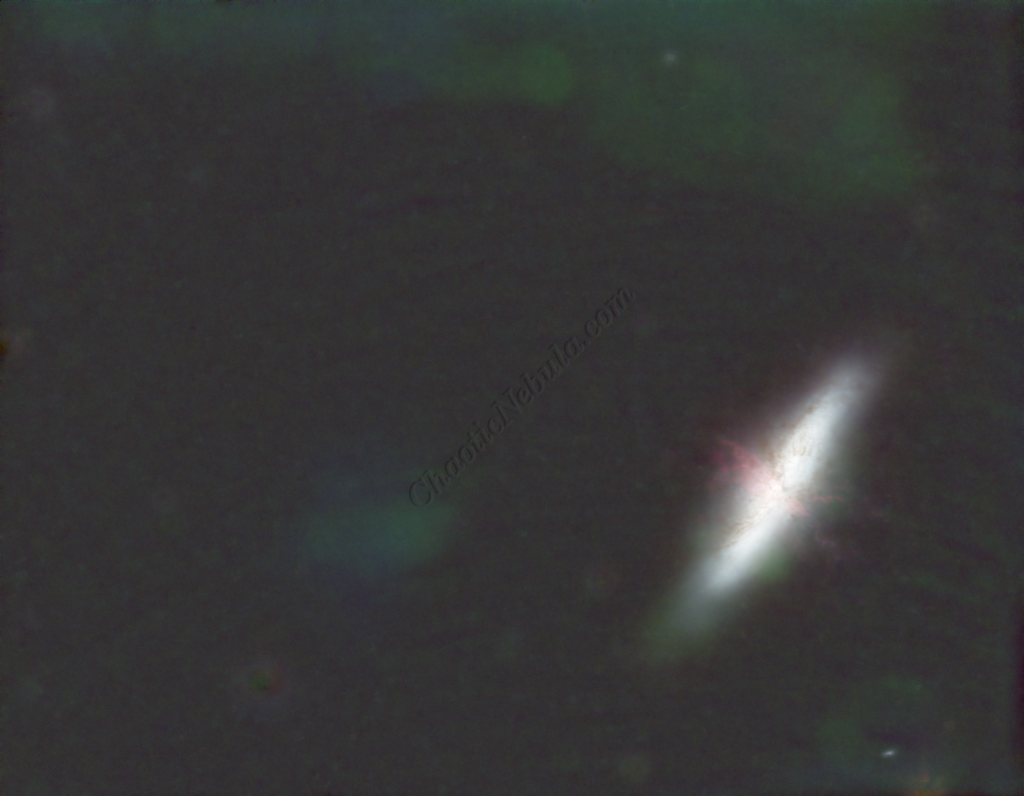
Histogram Stretch
Color Saturation
Luminance Workflow
Before doing anything more to the color image, it is time to go through the Luminance Workflow.
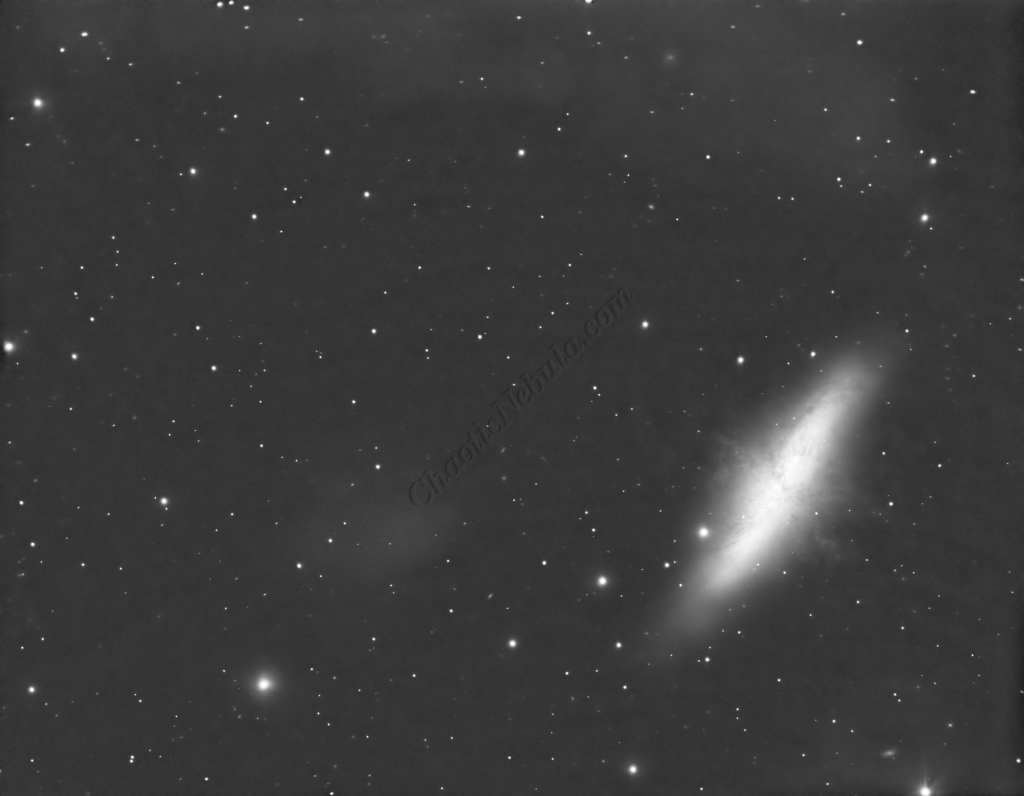
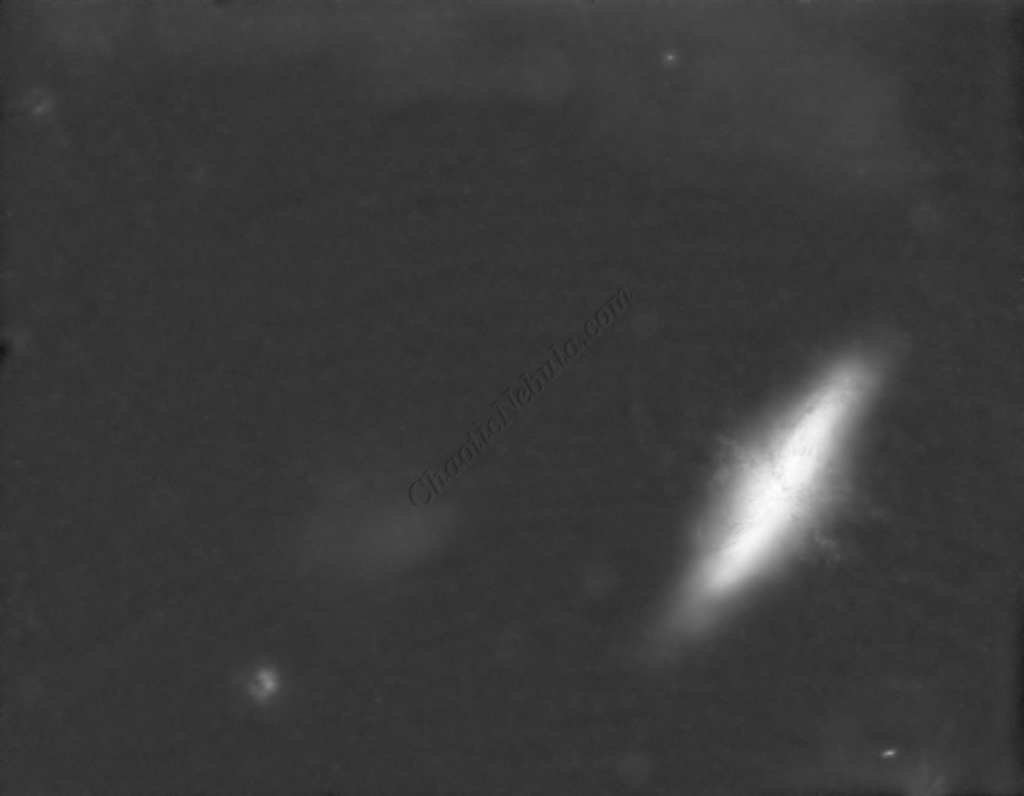
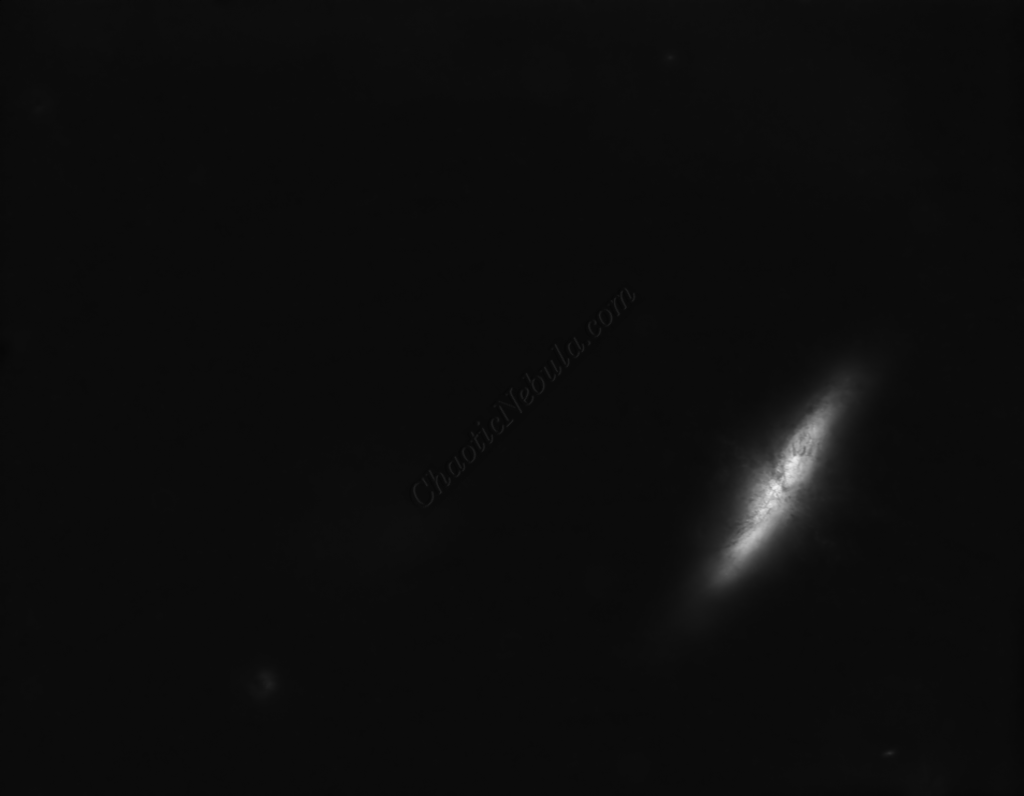
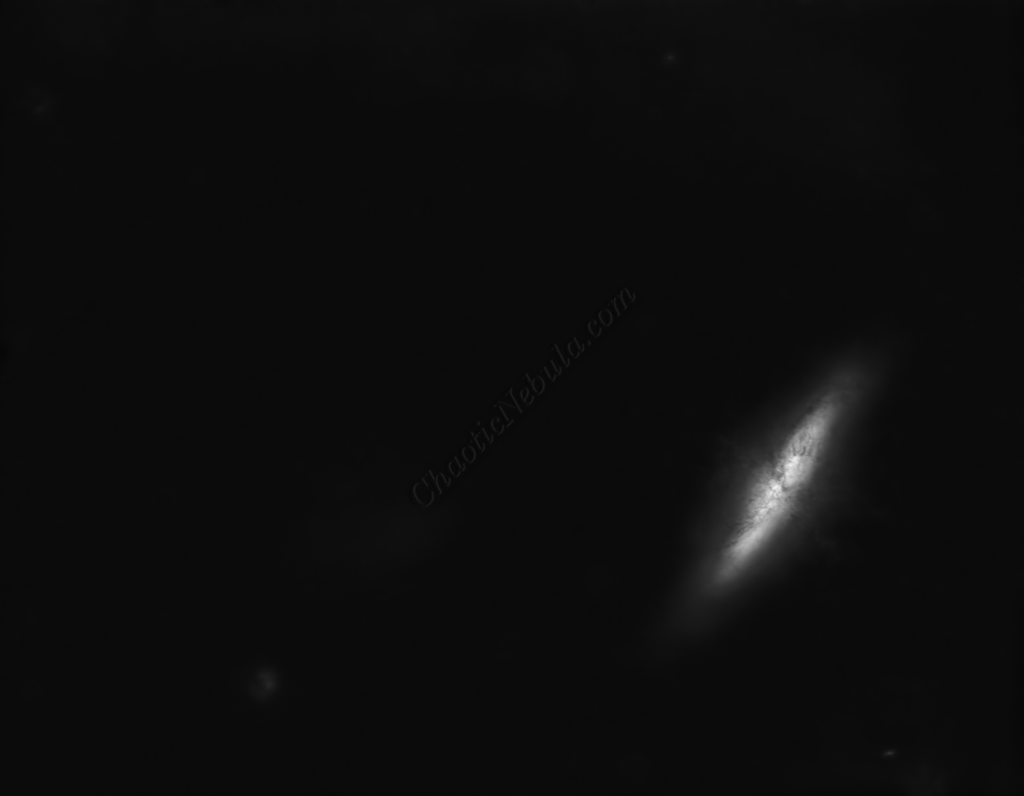
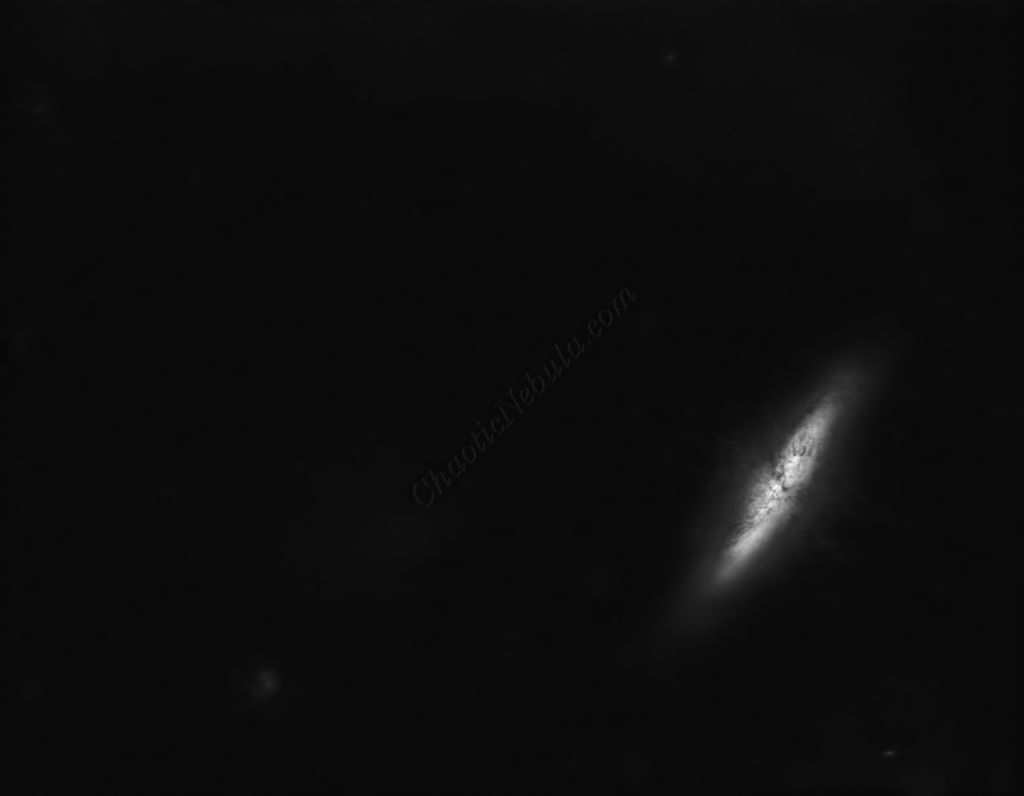
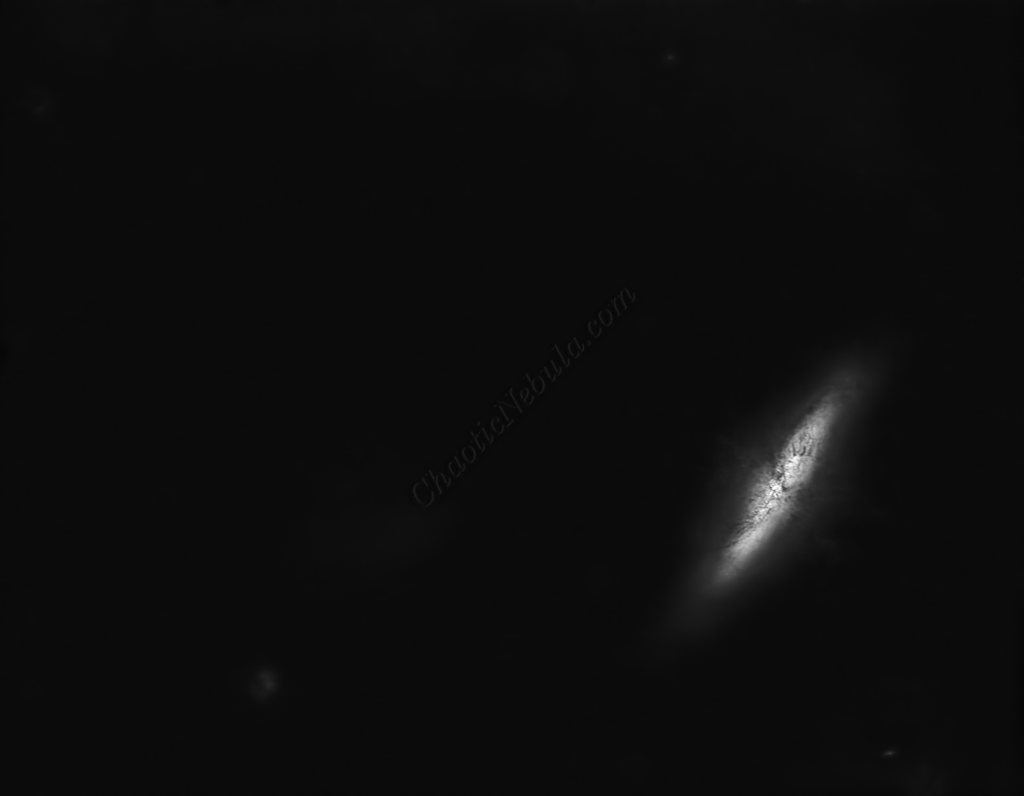
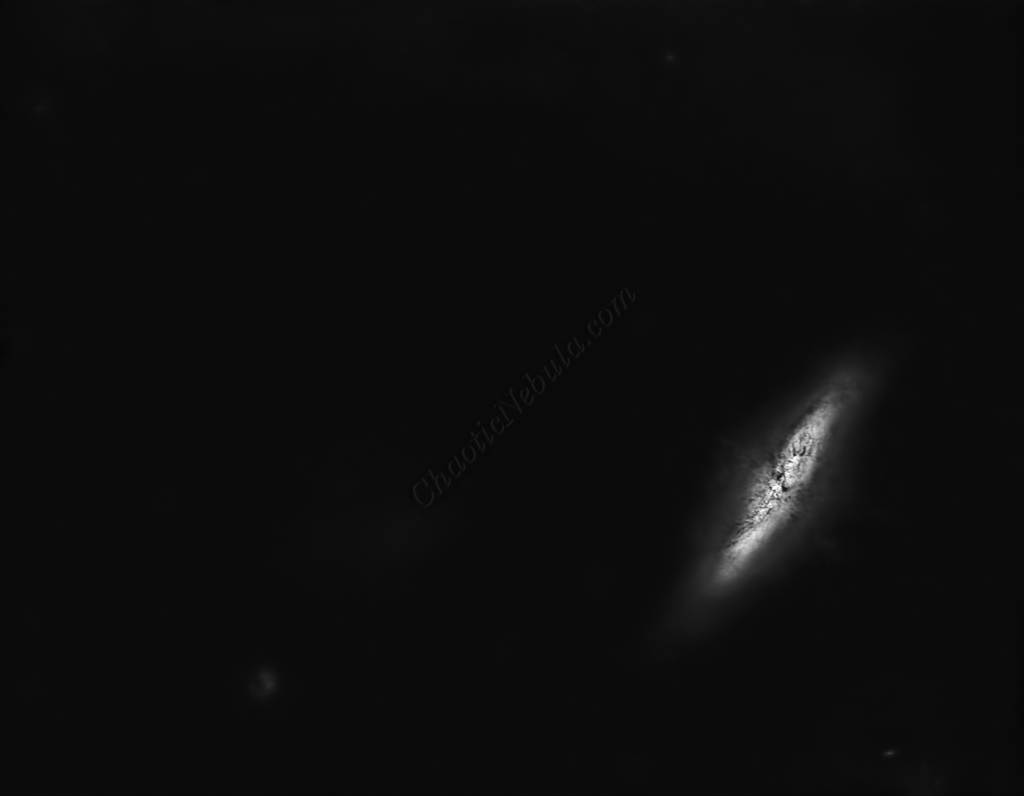

Luminance Integration (LRGB)
Saturation
PixInsight Curves Transformation increased the overall color saturation.
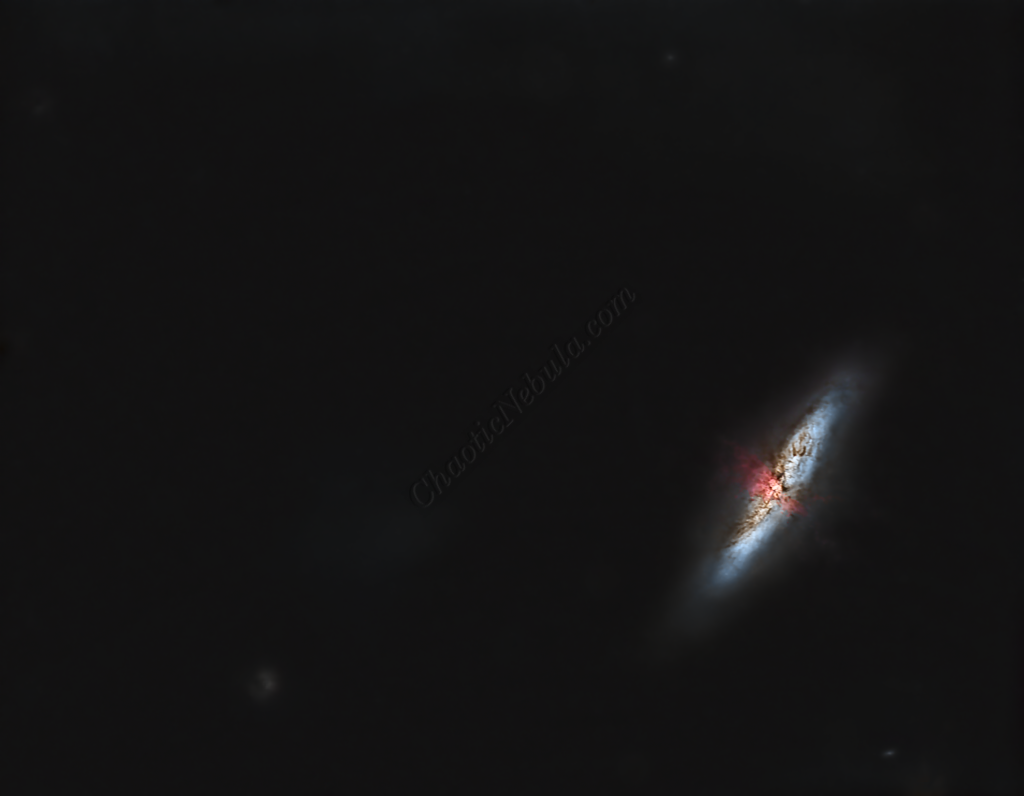
Brightness
PixInsight Curves Transformation increased the overall brightness.
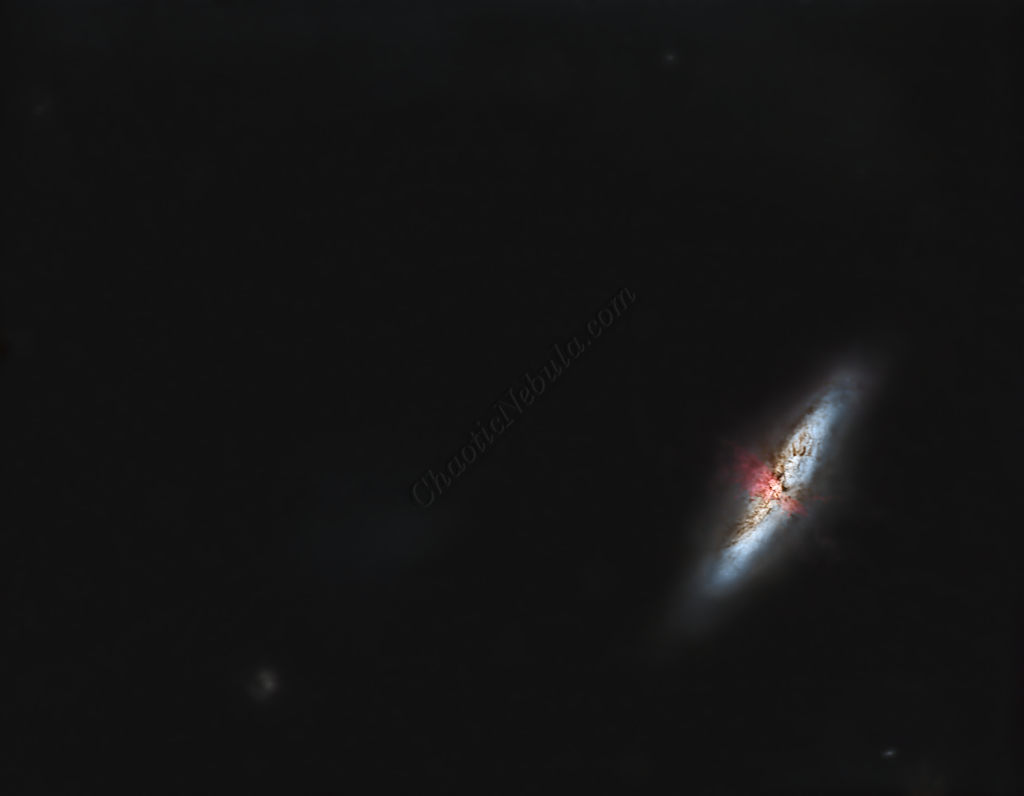
Stars
ACDNR for Chrominance
Although NoiseXTerminator did a great job in removing the noise from the image early on in the workflow, some of the processing might have added noise in the color. Applying ACDNR for only chrominance helps correct this without losing details.
